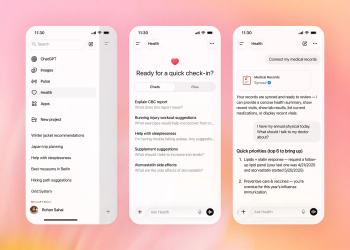
Four annuity enhancements that can boost income or savings
These add-ons are well worth considering but look carefully at costs and benefits.
Annuities come in different varieties, and each type offers different optional features. Since there are so many riders and options, it’s impossible to cover them all in one article. I’ve chosen four that may be particularly worthwhile, depending on your circumstances and preferences.
A return of premium (ROP) rider is an option available with some fixed-rate deferred annuities. Also called a multi-year guarantee annuity or
However, if you cash in your annuity early, during the surrender period, you’ll pay an early surrender charge, which typically decreases each year—and thus the reason for this rider.
The ROP rider guarantees that you will not receive less than the premium deposit you made from day one, even after early surrender charges and market-value adjustments. You get flexibility should life throw you a curveball and you need all your money back.
If you choose this option, you will usually get a slightly lower interest rate. For instance, one insurer offers a five-year annuity that as of October 2022 pays 4.95% without the rider and 4.70% with it.
Before you commit, find out how much in penalty-free partial withdrawals the annuity would allow. If they’re generous enough, you may not need this option.
Three options for fixed indexed annuities
Depending on market performance and the annuity contract, you may not get all of the upside during an up year. That’s because there’s usually either a set cap rate, for example, no more than an 11 percent increase in a given year, or a participation rate, such as no more than 60% of the index gain in a policy year.
Enhanced index crediting options. With some fixed indexed annuities, you can buy a higher index cap rate or participation rate by paying a small annual fee for it, often around 1.00% to 1.50% of allocated assets annually. If the amount of extra interest earned as a result of the higher cap or participation rate exceeds the fee charged, then it was a winning decision. If you’re optimistic about the stock market over the long term, consider this option.
Enhanced death benefit rider typically creates a separate death benefit value that increases at a guaranteed higher annual rate than may be experienced with the actual account value for a certain number of years. Upon the death of the annuity owner, the beneficiary gets the higher of the two values.
Typically, a small annual fee is charged. For example, one insurer charges 1.15% of assets, which is deducted from the account value. If you want to leave more money to your children, this rider may be worth adding.
Lifetime income rider. This helps generate more guaranteed lifetime income at a future date while still giving you complete control over the money in your indexed annuity. Since you don’t set the date in advance for income payments to start when you buy the annuity, you retain planning flexibility. You can choose to start receiving lifetime income, typically beginning at age 55 or later, for just yourself or you and your spouse.
Normally, when you convert any annuity into an income stream, (“annuitization”), its cash surrender value becomes zero. But with this rider, you still own the full unused value of your annuity. A huge advantage, but there are downsides.
Most insurers charge around 1% annually of the assets in the annuity to add an income rider. So, your contract value will grow more slowly than without the rider.
The lifetime income amount is determined by the income account value and your gender and age at the time you start receiving payments. The income account value typically grows at a guaranteed annual compounded rate of 4 to 8 percent, so the longer you wait until you start taking payments, the greater the income.
The income account value and cash value of your contract are separate. The income account value is used only to calculate your guaranteed income payments. It has no cash value and cannot be withdrawn. In contrast, the contract value can be withdrawn or passed to your heirs.
After income starts, annual payments are deducted from the contract value. If that value ever reaches zero, annual income payments are still guaranteed for the remainder of your lifetime, but the annuity would no longer have any cash surrender value.
If you die before income activation, your beneficiaries will receive the full annuity contract value as a death benefit. If you die after income activation, the income payments will cease and your beneficiaries will receive any remaining annuity contract value.
Lifetime income riders vary dramatically among annuity companies. AnnuityAdvantage’s
All four add-ons covered in this article are optional.Even without one, you’ll still have the powerful advantages of an annuity. Sometimes, however, paying the additional fee for a rider or feature can be a smart move.
Newsletter
Stay informed and empowered with Medical Economics enewsletter, delivering expert insights, financial strategies, practice management tips and technology trends — tailored for today’s physicians.








